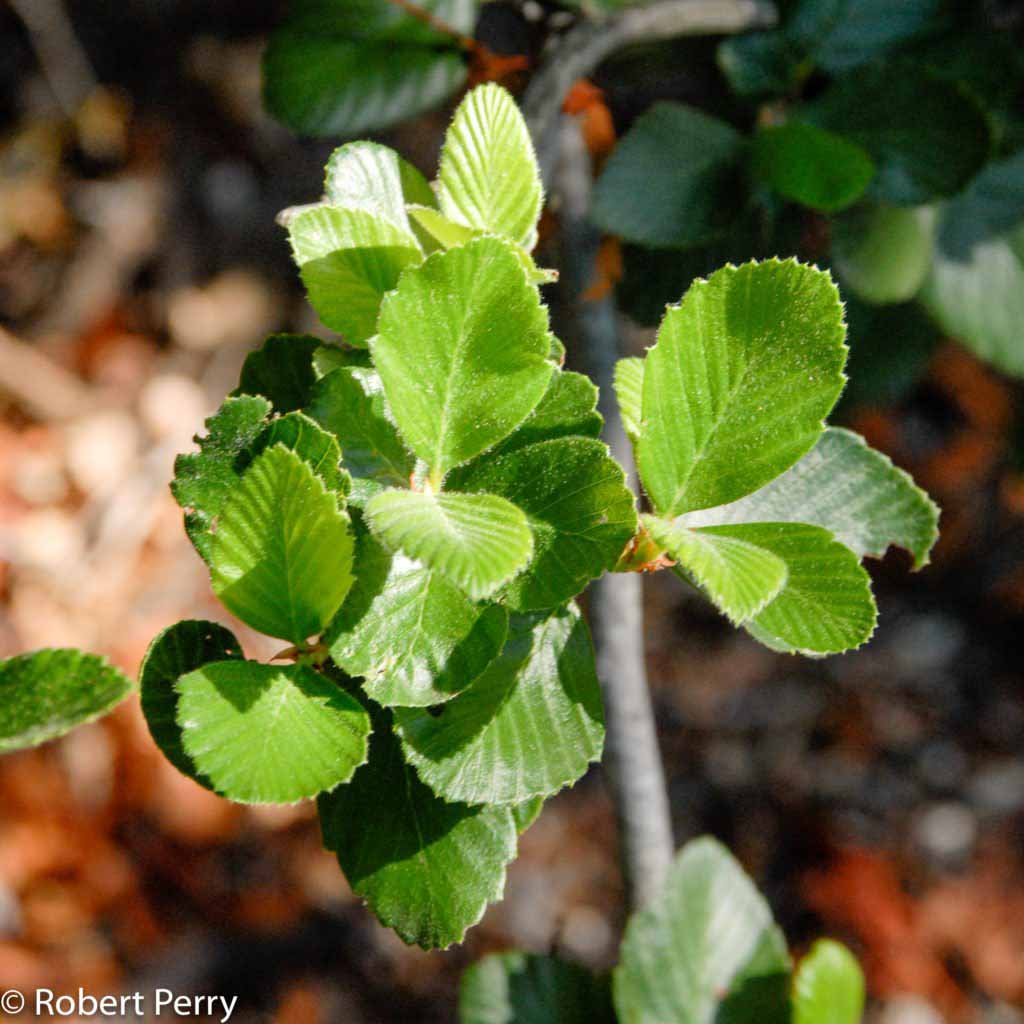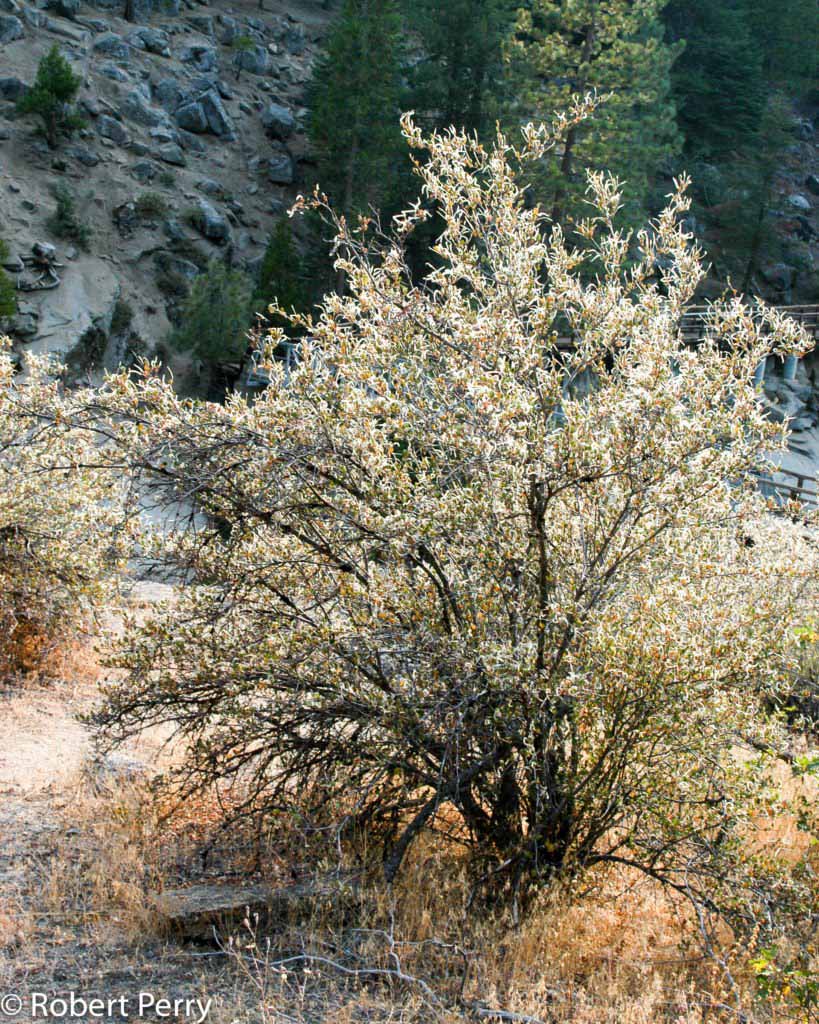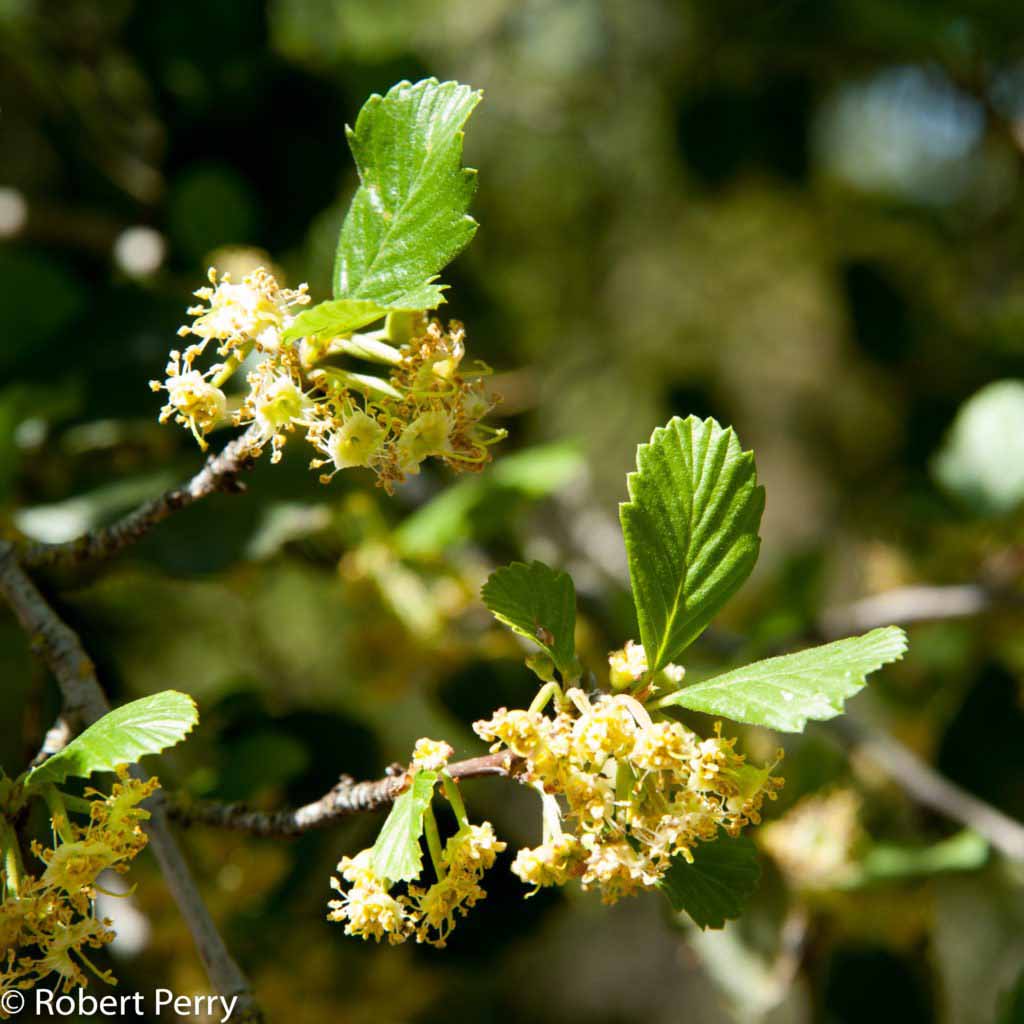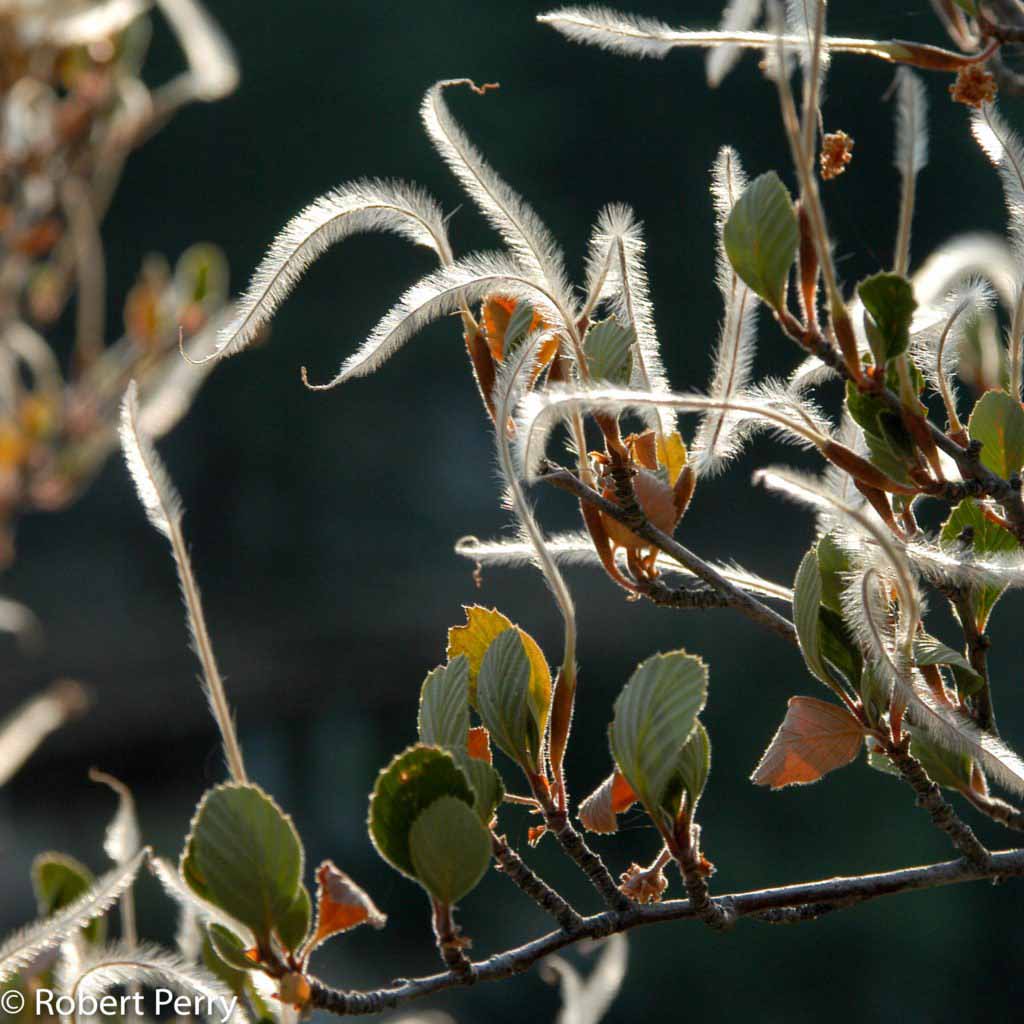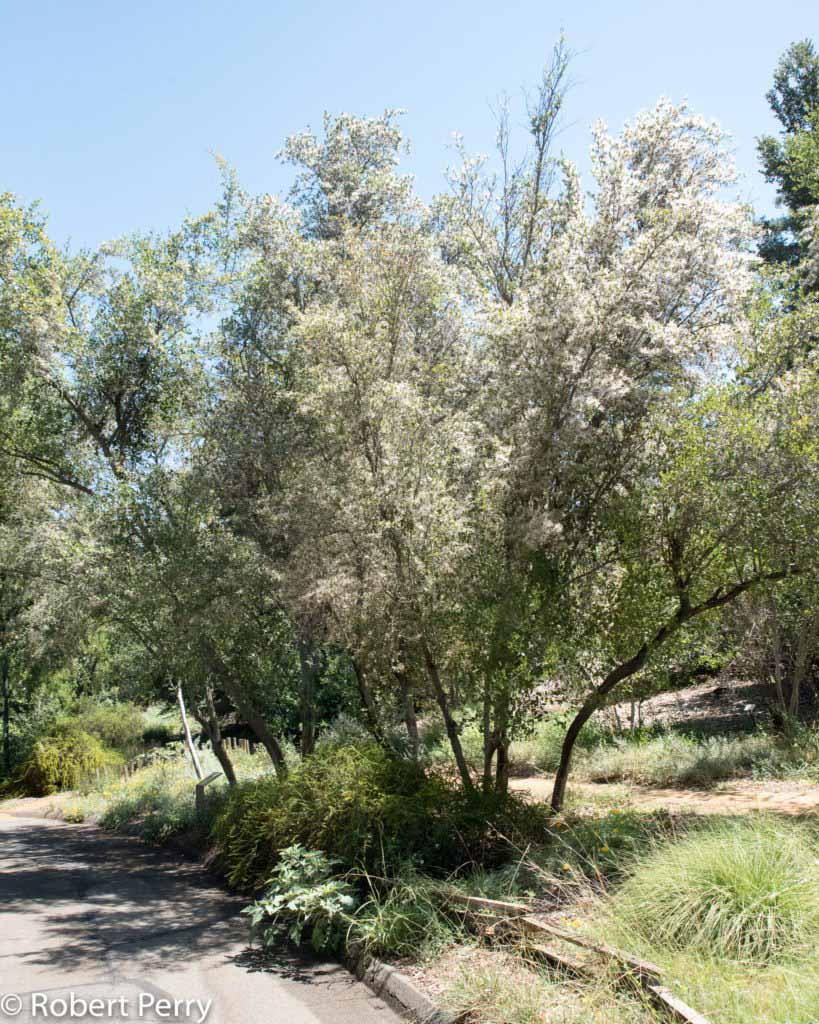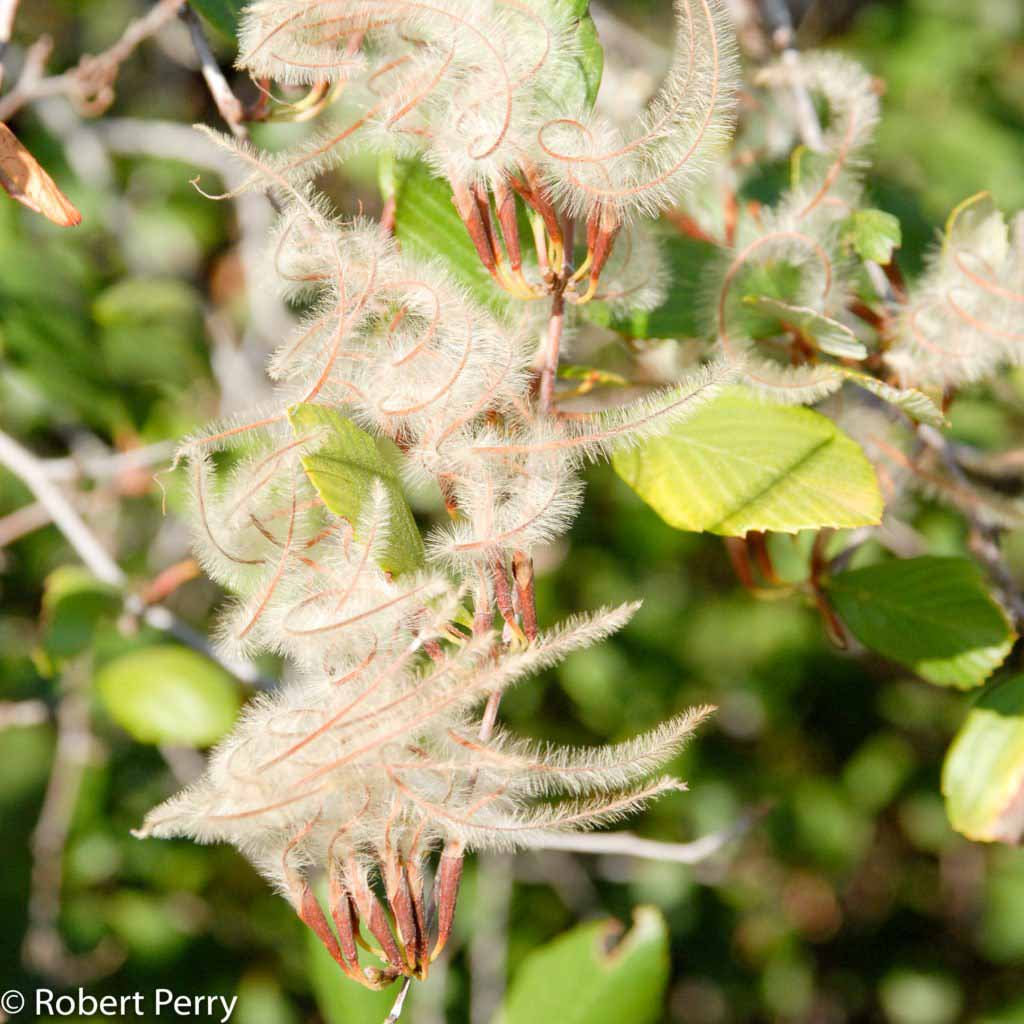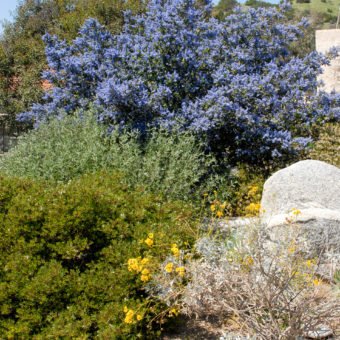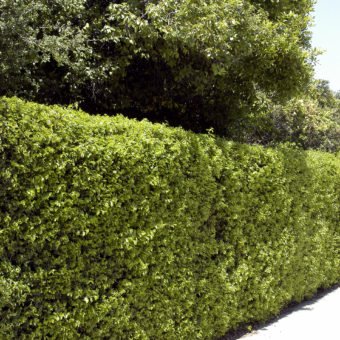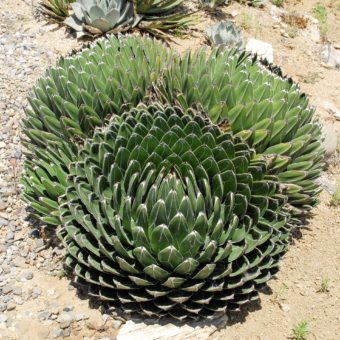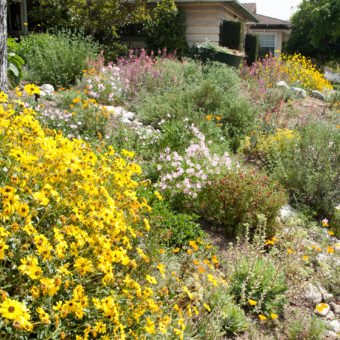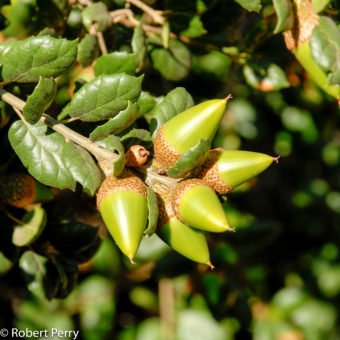The genus Cercocarpus is a small group of plants containing about 13 species, all native to the western United States and Mexico, and particularly California. These are tough plants that are appreciated for their habitat and wildlife value in many plant communities. They have small leaves, tiny flowers and intriguing twisting seed plumes that are attractive when illuminated by sunlight. A few species are grown in ornamental gardens among other native plants, but most are planted for revegetation of native areas.
Western mountain mahogany is a large evergreen shrub with a rambling branch habit that can grow 10-15 ft. tall and as wide. Medium green leaves grow to 1 in. and have distinctly toothed margins. Tiny yellow flowers occur in spring; large numbers of seeds and seed plumes mature in spring and summer and are very attractive when highlighted by sunlight. Look for this plant mostly in botanic gardens and demonstration plantings where it adds pleasing diversity and adds to the wildlife value of the landscape.
